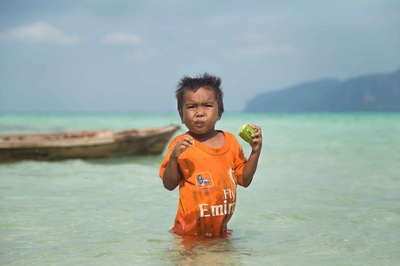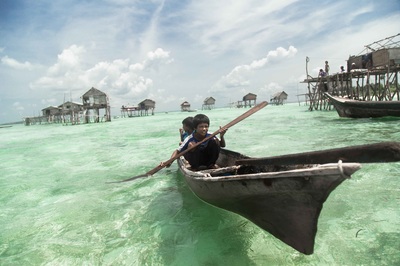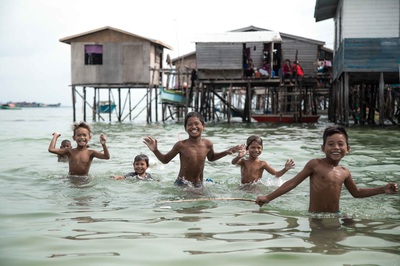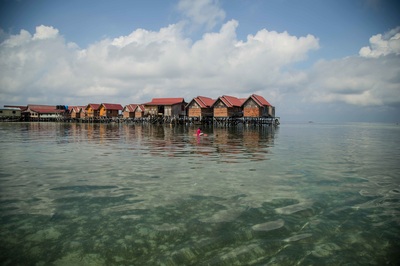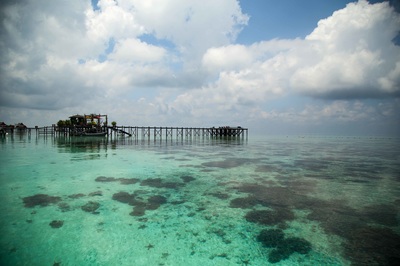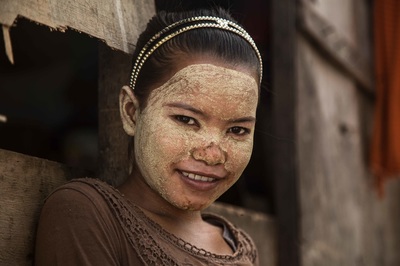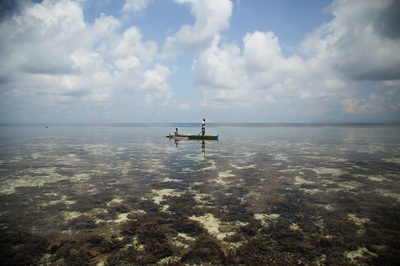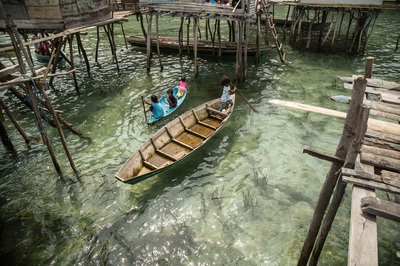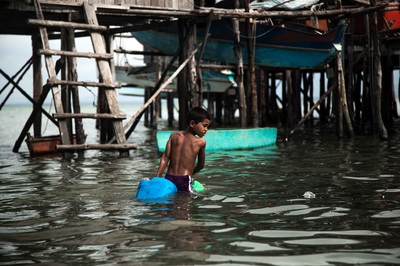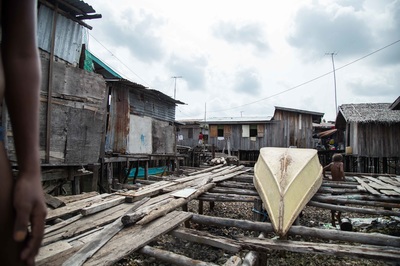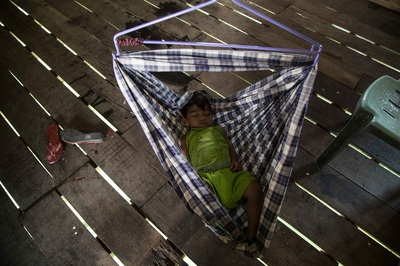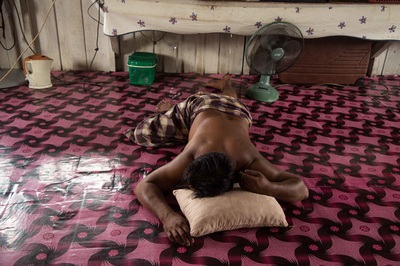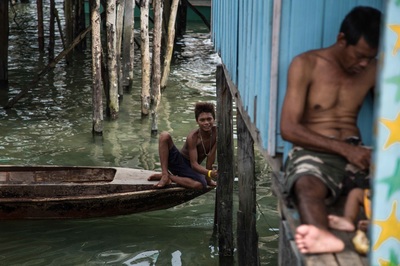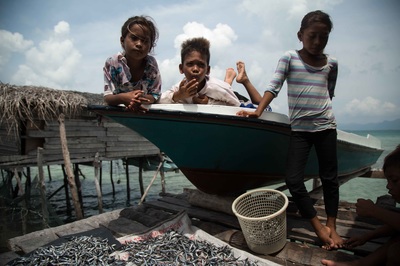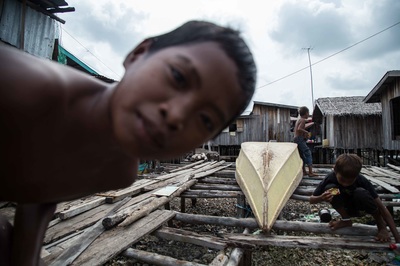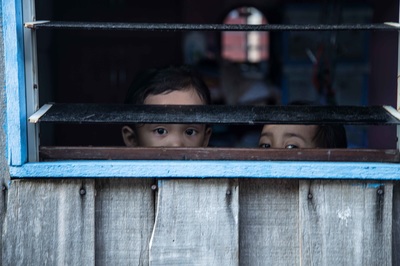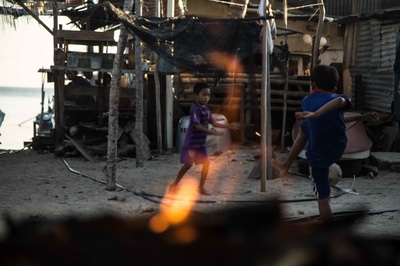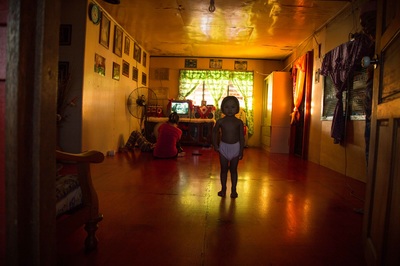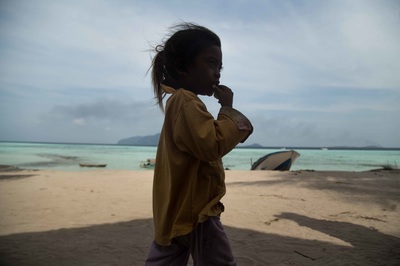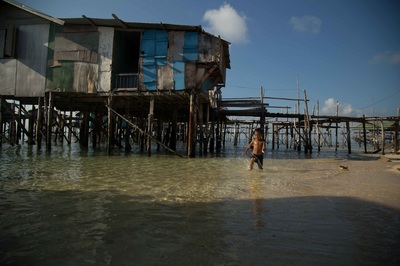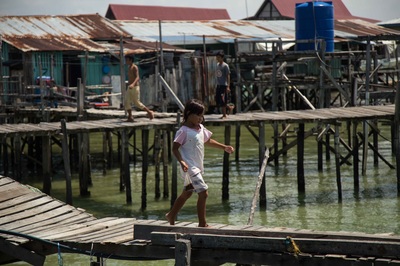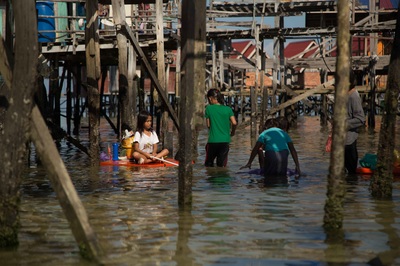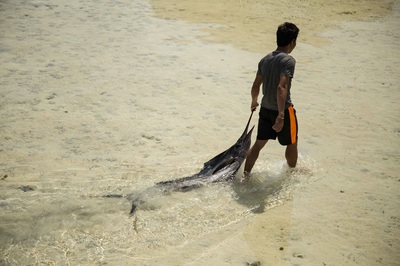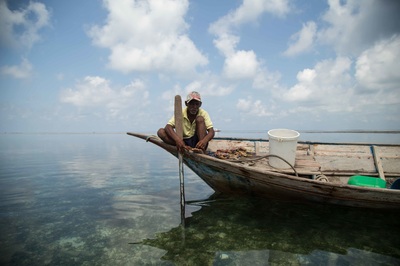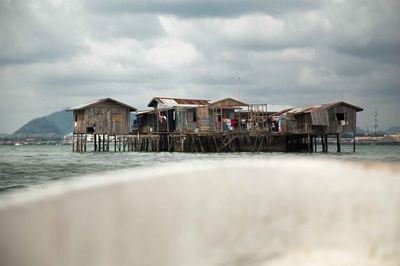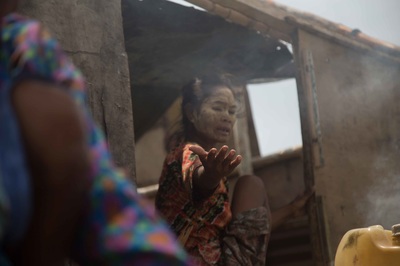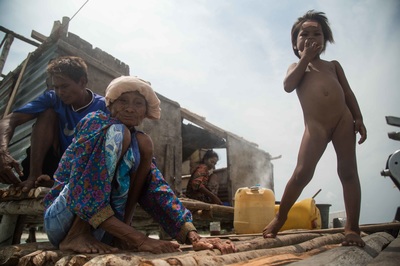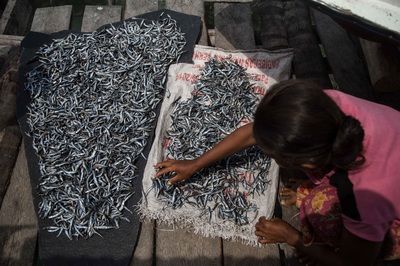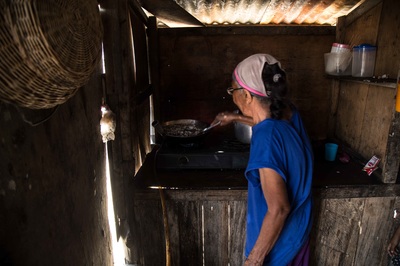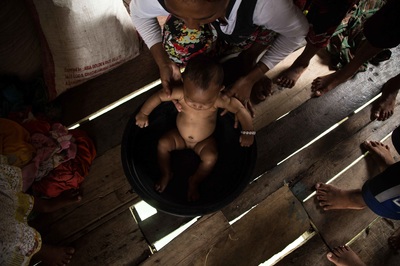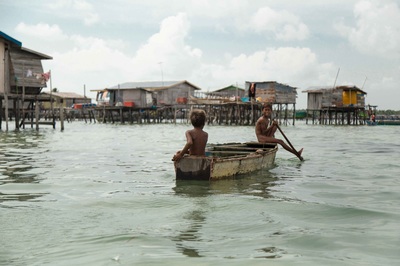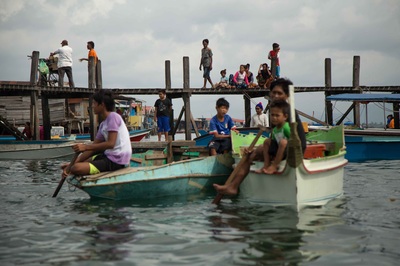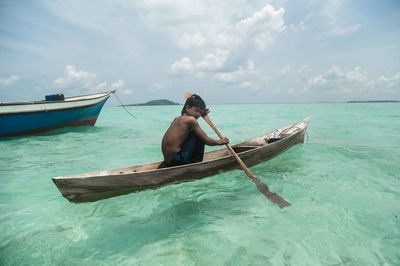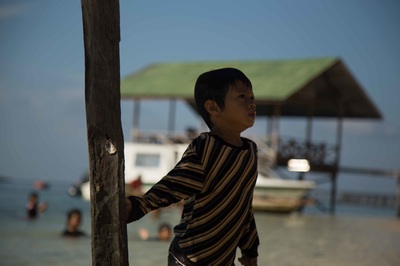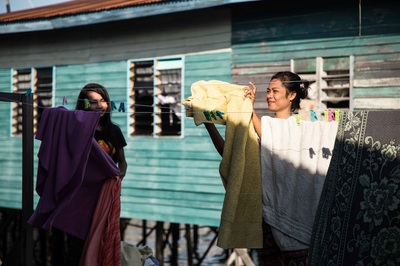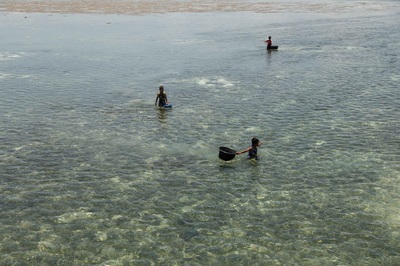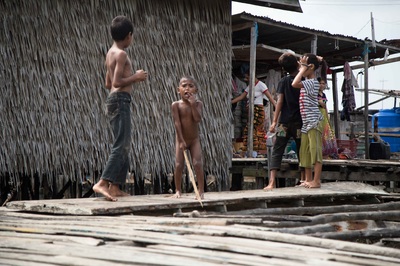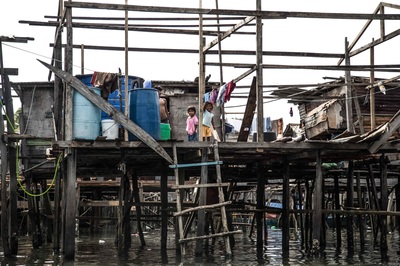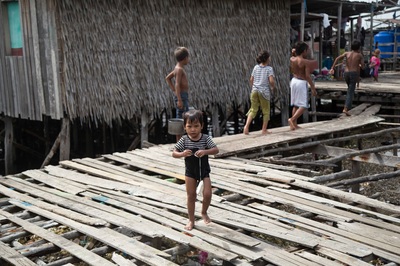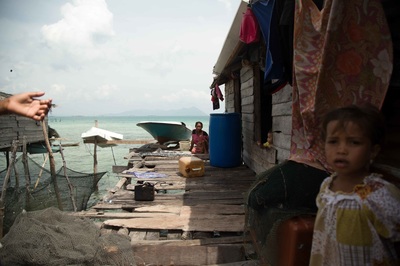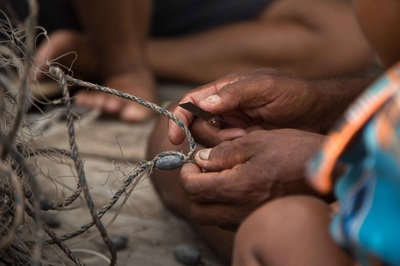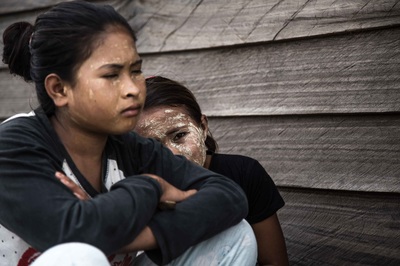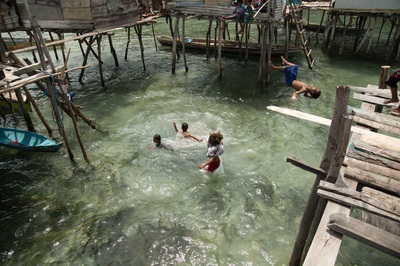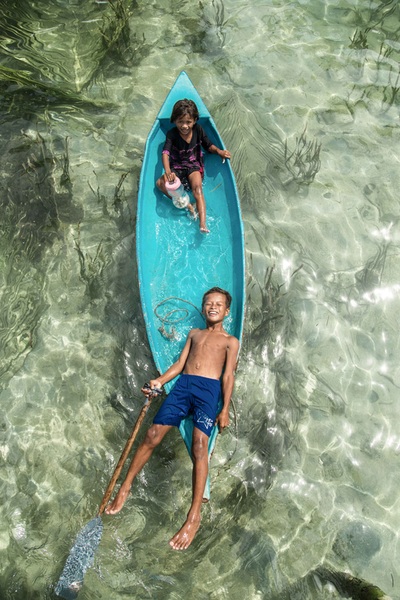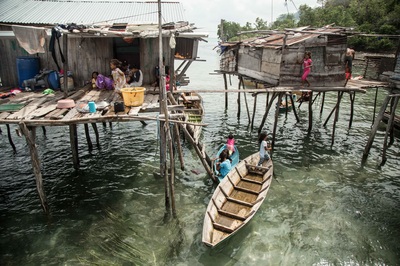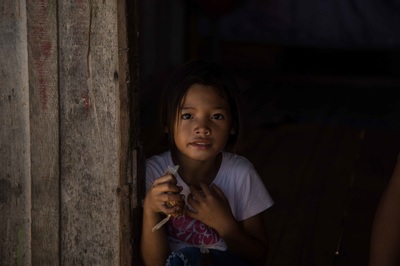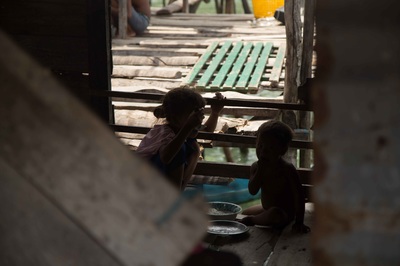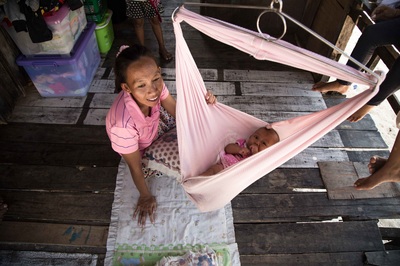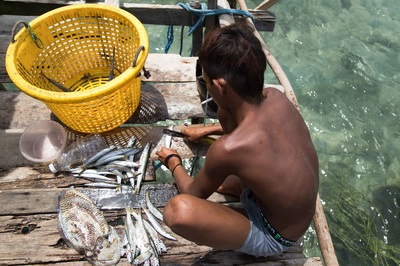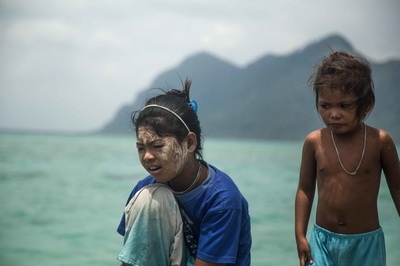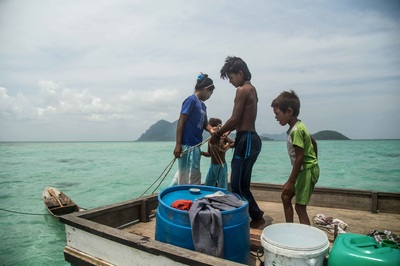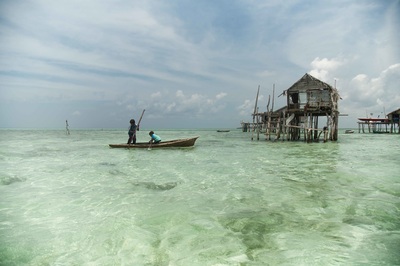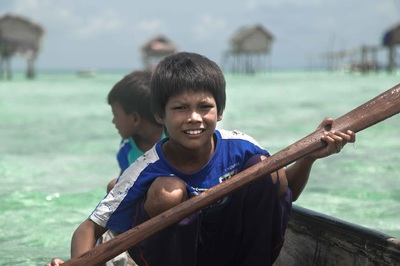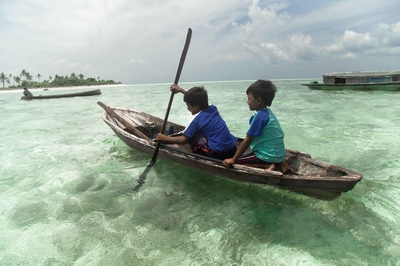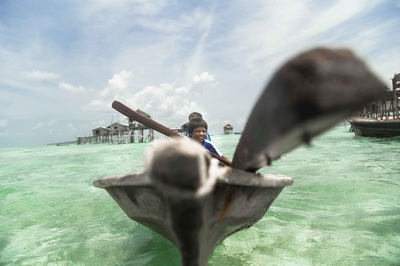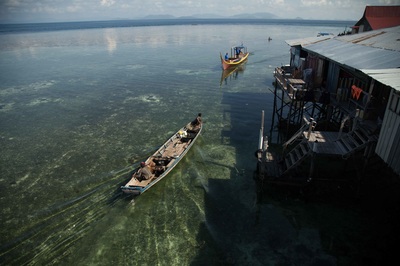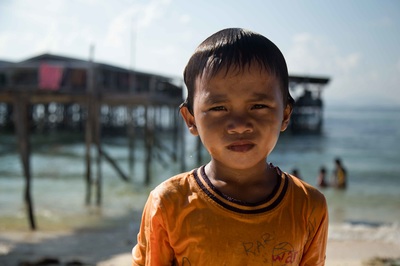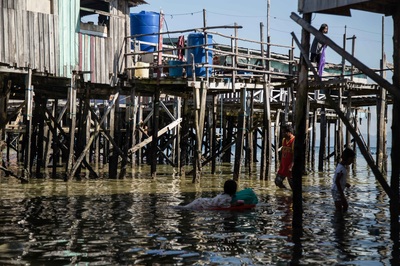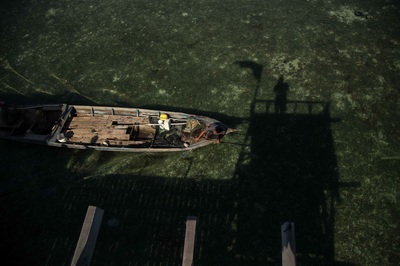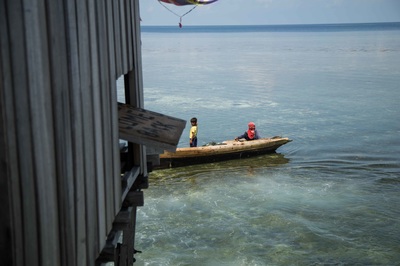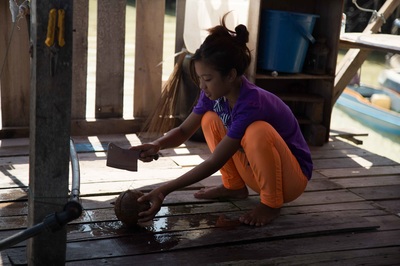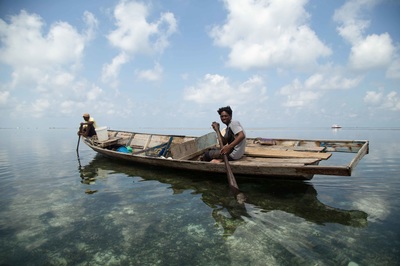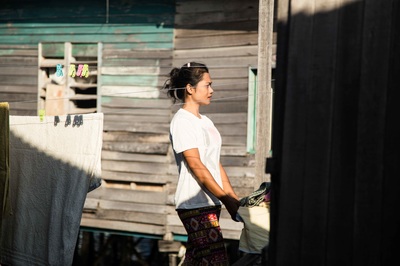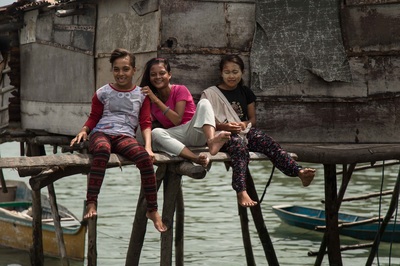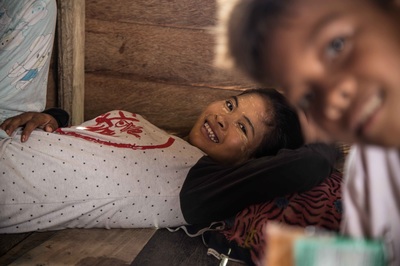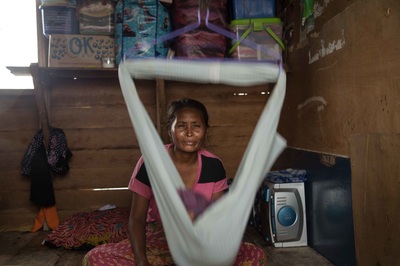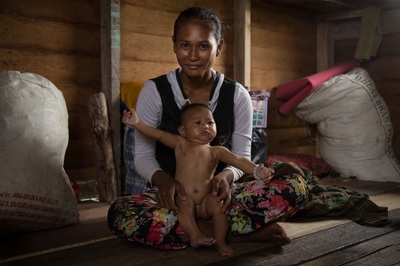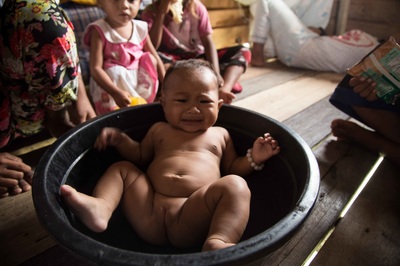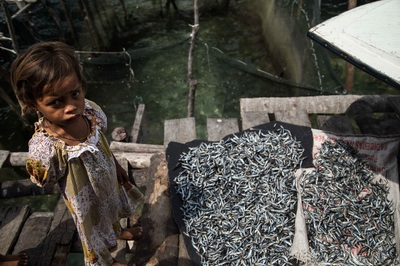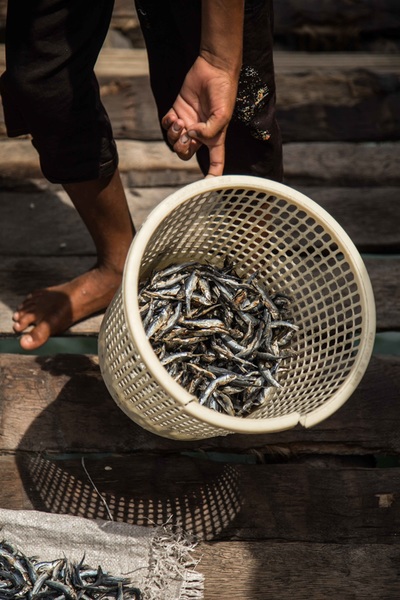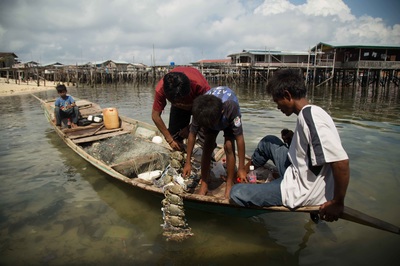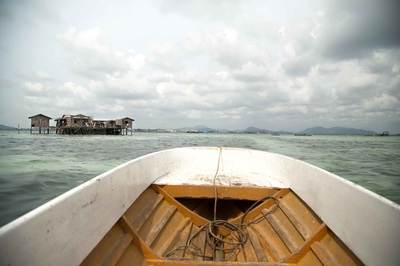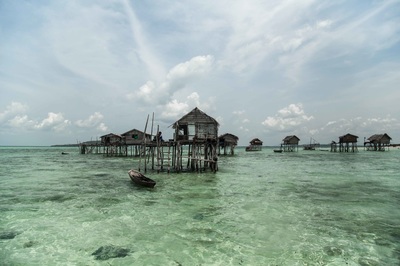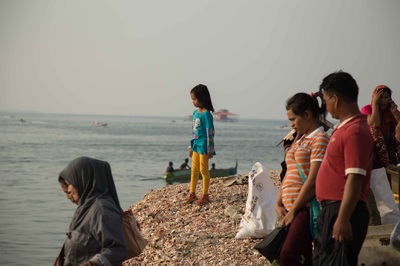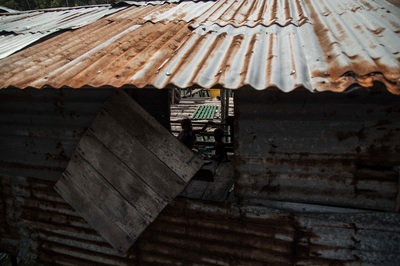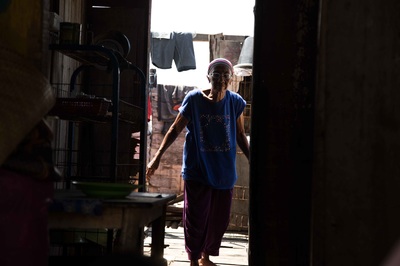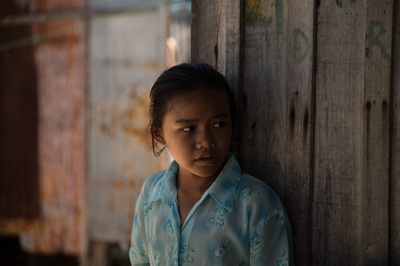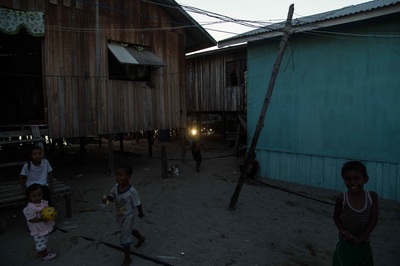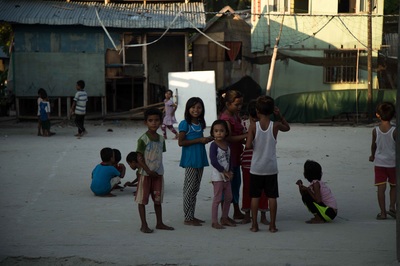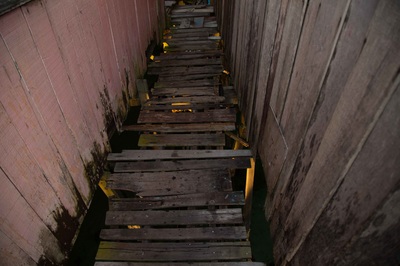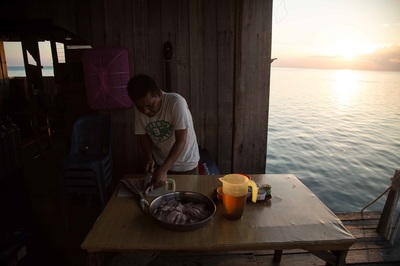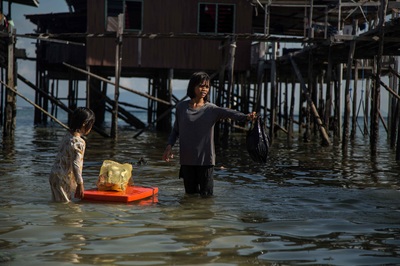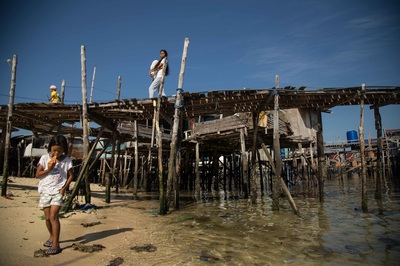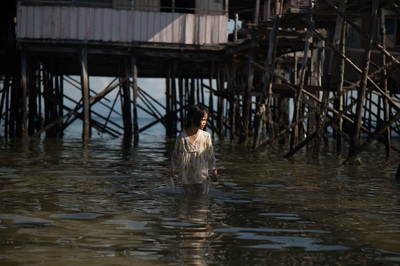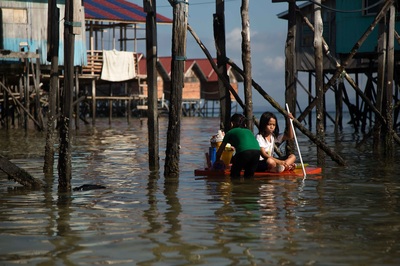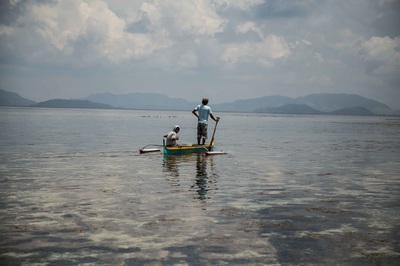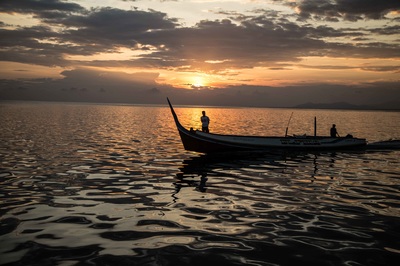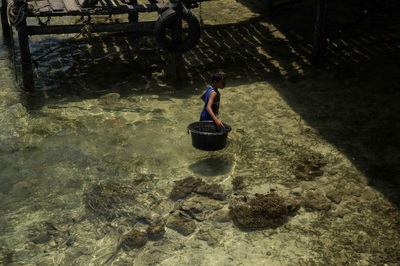The Last Of The Seafaring Peoples
Commonly referred to as the Sea Gypsies, the Bajau Laut people inhabit desert islands and remote outposts between Malaysia, Indonesia and The Philippines, linked by the Sulawesi Sea. Traditionally, they have followed a seaborne nomadic lifestyle, that has been under fire for some time.
They have adapted to survive. Partly pushed aside by the national governments and to some extent, preferring a life led in isolation, the Bajau have taken a practical approach to modern life based on their customs, by building their humble huts upon stilts around their main source of sustenance: coral reefs adjacent to remote coastal areas. Their trusty lepas –hand-made wooden boats– are their key to fishing and trade – as well as a source of pride. Every April they hold the Regatta Lepa, an event in which they festively decorate the source of their livelihoods and parade them in flotillas for all to admire.
The Bajau harvest the sea. From fishing to gathering clams sea urchins, as well as fetching lobster and sea cucumbers – they fully utilize all of the sea's resources. The Bajau are also prolific free divers, able to hold their breath underwater for up to ten minutes. Their diet is composed mainly of sea bounty – and what other goods they can obtain by bartering with their neighbors from their lepas. The Bajau rarely set foot on land, and when they are forced to do so, they frequently complain of 'landsickness'. For these seafaring people, the only way they give up a life at sea is through death, when a procession of boats carries the departed to land for burial.
The Bajau are animists who worship the spirits of their ancestors in elaborate rituals officiated through song and dance. Although in certain coastal areas, there are plenty of Muslim Bajau – they still intertwine their recently acquired beliefs with ancestral ones. Couples typically marry young, between the ages of 13 and 15 – yet age is a concept they are unable to grasp. Their traditions are quite literally, timeless: they do not keep track of hours, days or years, which is why –when asked– many Bajau don't know how old they are. Nor do they seem to care.
The surge of tourism in the area has brought large-scale seaside developments and an influx of foreign visitors. This has profited the modern local communities, but stripped the formerly free-spirited Bajau from their ancestral roaming grounds, confining them to the tiny enclaves they now inhabit.
It's a tough life. They live off the grid with no easy access to public services, outcast by society and subject to the whims of the sea: both a nurturer and a destroyer – that can turn on them at any time. They are also stateless: they inhabit the sea and not the land, thus states reject their claims of nationality. This invariably breeds further problems, namely that their lack of government-issued ID does not qualify Bajau children to attend public schools – perpetuating generations of illiteracy.
It is no wonder that many Bajau communities have tired of the constraints posed by trying to maintain the traditional lifestyle. Today, they are increasingly trading their nomadic life for a sedentary one, giving up living off the sea for living off the land. And with the bad, comes the good: as an increasing number of Bajau settle into sedentary agriculture they consequently raise their quality of life. Now they enjoy, for starters, a balanced diet, as well as comprehensive health services and education.
Yet this change might represent a death knoll for their traditional way of life. Their link to the ocean has been broken, and their lore, traditions and culture are being washed away in the name of progress and development.
The Bajau now stand at a complex crossroads, courtesy of globalization.
Text in collaboration with Carla McKirdy.
Commonly referred to as the Sea Gypsies, the Bajau Laut people inhabit desert islands and remote outposts between Malaysia, Indonesia and The Philippines, linked by the Sulawesi Sea. Traditionally, they have followed a seaborne nomadic lifestyle, that has been under fire for some time.
They have adapted to survive. Partly pushed aside by the national governments and to some extent, preferring a life led in isolation, the Bajau have taken a practical approach to modern life based on their customs, by building their humble huts upon stilts around their main source of sustenance: coral reefs adjacent to remote coastal areas. Their trusty lepas –hand-made wooden boats– are their key to fishing and trade – as well as a source of pride. Every April they hold the Regatta Lepa, an event in which they festively decorate the source of their livelihoods and parade them in flotillas for all to admire.
The Bajau harvest the sea. From fishing to gathering clams sea urchins, as well as fetching lobster and sea cucumbers – they fully utilize all of the sea's resources. The Bajau are also prolific free divers, able to hold their breath underwater for up to ten minutes. Their diet is composed mainly of sea bounty – and what other goods they can obtain by bartering with their neighbors from their lepas. The Bajau rarely set foot on land, and when they are forced to do so, they frequently complain of 'landsickness'. For these seafaring people, the only way they give up a life at sea is through death, when a procession of boats carries the departed to land for burial.
The Bajau are animists who worship the spirits of their ancestors in elaborate rituals officiated through song and dance. Although in certain coastal areas, there are plenty of Muslim Bajau – they still intertwine their recently acquired beliefs with ancestral ones. Couples typically marry young, between the ages of 13 and 15 – yet age is a concept they are unable to grasp. Their traditions are quite literally, timeless: they do not keep track of hours, days or years, which is why –when asked– many Bajau don't know how old they are. Nor do they seem to care.
The surge of tourism in the area has brought large-scale seaside developments and an influx of foreign visitors. This has profited the modern local communities, but stripped the formerly free-spirited Bajau from their ancestral roaming grounds, confining them to the tiny enclaves they now inhabit.
It's a tough life. They live off the grid with no easy access to public services, outcast by society and subject to the whims of the sea: both a nurturer and a destroyer – that can turn on them at any time. They are also stateless: they inhabit the sea and not the land, thus states reject their claims of nationality. This invariably breeds further problems, namely that their lack of government-issued ID does not qualify Bajau children to attend public schools – perpetuating generations of illiteracy.
It is no wonder that many Bajau communities have tired of the constraints posed by trying to maintain the traditional lifestyle. Today, they are increasingly trading their nomadic life for a sedentary one, giving up living off the sea for living off the land. And with the bad, comes the good: as an increasing number of Bajau settle into sedentary agriculture they consequently raise their quality of life. Now they enjoy, for starters, a balanced diet, as well as comprehensive health services and education.
Yet this change might represent a death knoll for their traditional way of life. Their link to the ocean has been broken, and their lore, traditions and culture are being washed away in the name of progress and development.
The Bajau now stand at a complex crossroads, courtesy of globalization.
Text in collaboration with Carla McKirdy.
© Sebastian Gil Miranda Photography - All rights reserved
